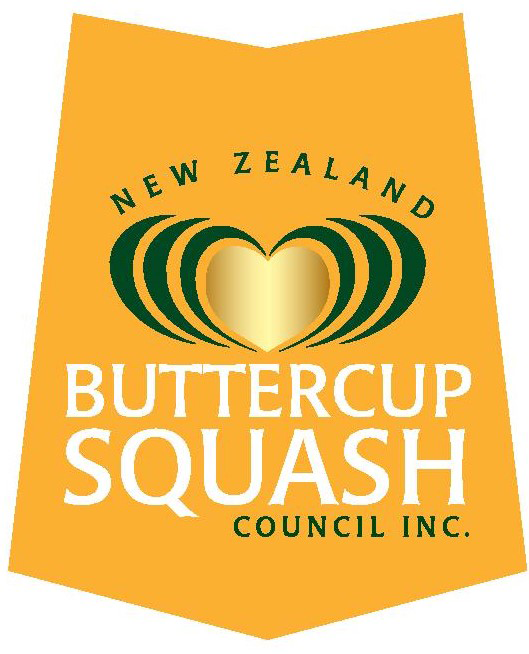Featured Research
This research catalogue contains published papers and reports and other research reports commissioned by the VR&I Board and contributing Product Groups.
Many of these documents are available directly on-line, in some cases they may be available only be emailing the Product Group concerned.
This page contains links to a selection of the latest research that has been supported by the VR&I Board.
Guidance on use of acephate and methamidophos on vegetable crops (2020)
OP Poster Vers 1 01/02/2020More details
Acephate and methamidophos (organophosphates) are insecticides that are not allowed to be used off-label on vegetable crops. This is a legal requirement and these restrictions have been in force from 2015. This poster is provided as a guide to vegetable growers to ensure legal use of these agrichemicals.
Minimising soil movement by vehicles off farm (2019)
VR&I Code of Practice 09/12/2019More details
This code of practice for vehicle washdown has been developed by Agrilink for the Vegetable Research & Innovation Board.
This COP is designed to assist you in determining which vehicle cleaning measures are best suited for your operation.
Minimising soil movement by vehicles off farm: Background material (2019)
VR&I Code of Practice 09/12/2019More details
This background document supports the Minimising Soil Movement by Vehicles Off Farm Code of Practice. It covers the
existing literature on a range of mitigation measures designed to minimise soil transport between farms or onto the road.
Generic IPM Guideline for Vegetable Crops (2019)
PFR SPTS No. 17561 11/09/2019More details
While an integrated pest management (IPM) approach to pest and disease management is generally crop-specific, the
components and principles of an IPM programme are more generic.
The aim of this guideline is to provide vegetable growers, crop scouts, crop consultants and crop managers with an understanding of the key components and strategies for growing vegetable crops using IPM.
Original publication: Walker M, Davidson M, Wright P. March 2019. Generic IPM Guideline for Vegetable Crops. A Plant &
Food Research report prepared for: Vegetable Research & Innovation Board, Horticulture New Zealand Inc. Milestone
No. 80265. Contract No. 36516. Job code: P/336075/01. SPTS No. 17561.
Nitrate quick test mass balance tool (calculator) (2019)
MPI SFF project Nitrogen – Measure it and Manage it 29/08/2019More details
This tool is a simple calculator to convert quick test strip results into an estimate of the crop's demand for nitrogen. N supply estimates are automatically calculated from the input information.
This tool should be used alongside the 'Quick test mass balance user guide' which may downloaded from this website (keyword search: nitrate), or from the FAR website (www.far.org.nz).
The nitrate quick test mass balance tool (2019)
MPI SFF project Nitrogen – Measure it and Manage it 29/08/2019More details
A nitrogen mass balance budget is a method to determine how much nitrogen fertiliser
should be applied to the crop to achieve its potential yield. However, for the budget to be
developed, estimates are required for the crop’s demand for nitrogen and how much of this
will be supplied by the soil.
Currently, there are two tests used to quantify soil nitrogen supply.
- The mineral N test, which provides a measure of how much nitrogen is immediately available for plant uptake.
- The anaerobically mineralisable N (AMN) test. This is an estimate of the N supply from the mineralisation of organic N.
For an effective nitrogen mass balance, both sources of nitrogen need to be measured. The
amount of mineral N in the soil can change quickly over a short period of time, especially as
crops take up nitrogen. It is useful to have quick and inexpensive methods for estimating soil
mineral nitrogen levels throughout the season. Previous work in New Zealand has shown
that Nitrate Quick Test strips are efficient and inexpensive.
This Guide provides guidance to growers on how to measure the soil nitrogen supply with
Nitrate Quick Test strips and make an informed fertiliser decision for the crop.
Good Management Practice: Neonicotinoids (2019)
01/09/2019More details
The Vegetable Research & Innovation Board (VR&I) and the Foundation for Arable Research (FAR) have commissioned a review of neonicotinoids to guide the development of Good Management Practices for New Zealand growers using neonicotinoids, while minimising the impact on the environment. The impacts of neonicotinoid use in horticulture has led to public concerns around the use of these agrichemicals in crops and as seed treatments. Public concerns focus particularly on impacts on the environment, the effect on the health of bees and colony collapse, and a decline in insect numbers in many countries, as well as human health and food safety issues. Agrichemical products in this group include clothianidin, imidacloprid and thiamethoxam; and acetamiprid and thiacloprid which are less-widely used in New Zealand.
The key practices for neonicotinoid use have been highlighted in a brochure “General Principles for Good Management Practices: Neonicotinoids” developed specifically for New Zealand growers. In addition to implementing GMP, a key to ensuring best practice is communication and collaboration between growers and beekeepers, keeping each other informed of their activities throughout the seasons.
Don't Muddy the Water. Final Summary Report (2019)
MPI SFF Project 407925 30/06/2019More details
Authors: Andrew Barber, Henry Stenning and Murray Hicks
Don’t Muddy the Water, was a 4 year long Sustainable Farming Fund (SFF) project focussed on Erosion & Sediment (E&S) control on cultivated horticultural land. The full analysis and results are contained within their own final reports available from HortNZ.
Agrilink and NIWA conducted a trial to determine the efficiency of Sediment Retention Ponds (SRP) on cultivated horticultural land. Weirs and autosamplers measured flow rates and collected suspended sediment samples from three different sized SRPs on a cultivated vegetable production site on Pukekohe Hill in Auckland.
Rootzone reality: technical review on network performance (2018)
PFR SPTS No. 16576 01/06/2018More details
In July 2014 a network of passive-wick tension fluxmeters was established on 12 commercial cropping farms in the Canterbury, Manawatu, Hawke’s Bay, Waikato and Auckland regions. The network is being used to quantify leaching losses of nitrogen (N) and phosphorus (P) in drainage water from below the crop rootzone. In this report we review the technical performance of the fluxmeter network for the period 1 October 2014 to 28 February 2018. This includes an
evaluation of measured drainage volumes against modelled outputs (generated using a mechanistic soil water balance model) and a summary of N and P losses in drainage water from each site. At most sites, this reporting period represents at least 3 years of continuous data collection allowing for multiple crop rotations and the dissipation of settling effects following installation of the fluxmeter units.
From this review we conclude that eleven of the twelve fluxmeter sites are operating in a manner suitable for the generation of robust data on N and P losses in drainage water (Table i). Only at one site (Site 8) were serious concerns raised about the performance of some fluxmeters, a number of which captured no drainage in the 41 months of monitoring. At all other sites, the fluxmeter units were found to be operational and effective at capturing drainage,
despite sometimes large variations in volumes captured by individual units. Drainage variability was attributed to different patterns of accumulation across the sites as affected by topography, soil physical properties and crop factors. At seven of the sites (Sites 1, 2, 3, 4, 5, 6 and 10), captured drainage volumes were highly consistent with the timing of drainage events and patterns of drainage accumulation as predicted by the soil water balance model (Table i). At the remaining five sites (excluding Site 8), and during certain periods, captured drainage volumes deviated from modelled predictions. This was attributed to flooding of the fluxmeters resulting in excess capture volumes (Sites 7, 11 and 12) or inefficient drainage collection resulting in reduced capture volumes (Site 9). Where flooding occurred, N and P losses were estimated using a combination of modelled drainage and measured concentration data, an approach that is common for other sampling methods such as suction cups. Concentration data from flooded units were carefully evaluated to ensure that values were representative of drainage permeating through the soil profile, as opposed to bypass flow or ground water infiltration. At Site 9, we are awaiting soil physical characterisation results to confirm whether captured volumes are indeed being underestimated.
Inorganic N losses have varied widely across the network sites ranging from 0.5 to 234 kg N/ha (Year 1; 1 September 2014 to 30 August 2015), 2 to 173 kg N/ha (Year 2; 1 September 2015 to 30 August 2016), 16 to 203 kg N/ha (Year 3; 1 September 2016 to 30 August 2017) and 3 to 118 kg N/ha (Year 4, part; 1 September 2017 to 28 February 2018) (Figure i). High net losses were associated with high drainage volumes and inorganic N concentrations (predominantly
nitrate-N) in drainage water. In most cases drainage losses occurred during the late autumn, winter and/or early spring months when rainfall and soil moisture contents were highest. Cumulative P losses in the respective Year 1, Year 2, Year 3 and current Year 4 monitoring periods ranged from 0.02 to 1.99 kg P/ha, 0.05 to 0.28 kg P/ha, 0.04 to 0.67 kg P/ha and 0.01 to 0.10 kg P/ha (Figure i). These represented fairly small net losses, of which the majority (50–95%) was in the dissolved reactive form (DRP) in the drainage water.
Nutrient management of vegetable crops in New Zealand (2019)
01/01/2019More details
By JB Reid and J D Morton
In 1986, MAF published Fertiliser Recommendations for Horticultural Crops. The book summarised nutrient requirements for the major vegetable crops based on research results obtained up till then (Wood et al. 1986). In 2000, the Vegetable Growers Handbook (Wallace 2000) contained information for fertiliser use, but the scientific basis for many recommendations was unclear. Since then, much has changed in the business, social and regulatory environment of horticulture. Crop location, varieties, management practices and yield expectations have changed, and growers are more aware of the impact of their practices on the environment. New scientific approaches have enabled researchers to quantify the influences of many of the key interactions between plants, soils, and management that influence productivity, profitability and risk.
This book builds on the 1986 recommendations with the results of a further thirty-odd years of research. In addition, there is information on environmental impacts and improving the efficiency of fertiliser use. The format is deliberately brief and direct.These recommendations are intended to be a guide based on the best current experimental evidence; they are not prescriptive requirements. At times it may be beneficial to use the skills of a nutrient management adviser to interpret and if necessary modify them for specific circumstances.
This book is intended to be a resource of best-practice advice to manage the nutrition of vegetable crops in New Zealand (NZ). The emphasis is firmly on practices that are scientifically defensible.







